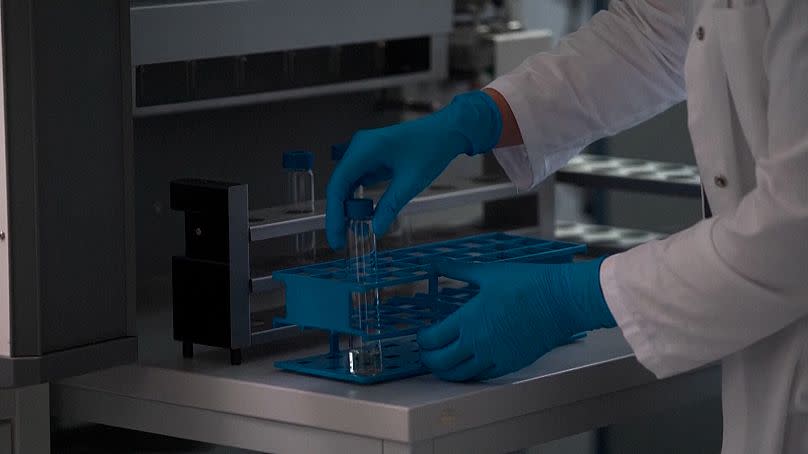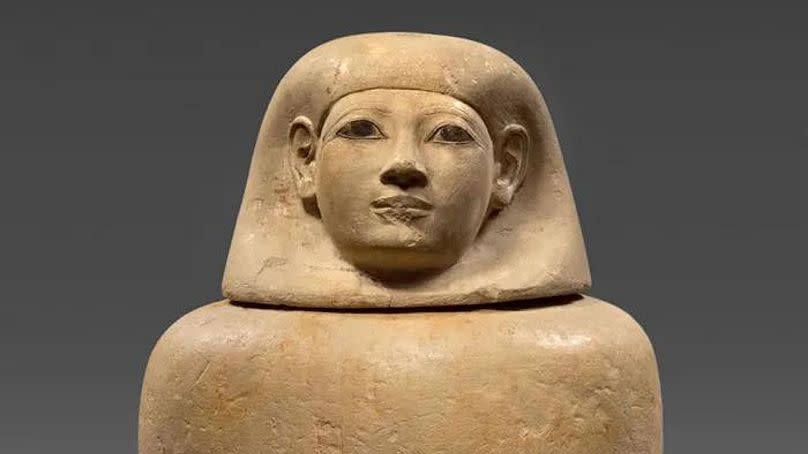'Scent of the afterlife': Scientists recreate the fragrance of an ancient Egyptian mummy
It’s been thousands of years, but still, much of ancient Egypt’s mummification practices remain hidden in history. But now, researchers are sniffing out new clues.
Using cutting-edge technology, experts at Germany's Max Planck Institute have successfully identified and replicated the fragrance used in the mummification process of a prominent Egyptian woman.
The focus of the team's research revolved around the substances employed to embalm the noblewoman Senetnay, around 1,450 BC. Her remains were unearthed in the Valley of the Kings in 1900 by the renowned British archaeologist Howard Carter, whose fame soared in 1923 when he uncovered the tomb of Tutankhamen.
Now, Denmark's Moesgaard Museum is revealing the smell, inviting visitors to journey back in time through their sense of smell, as part of a new exhibition into ancient Egypt's fascination with the afterlife.
Study reveals how Ötzi the Iceman, Europe's oldest mummy, actually looked while alive
Uncovering the secrets of mummy making: Ancient Egyptians leave a trail of clues
How did scientists unlock the 'the scent of eternity’?

Tiny residual samples were extracted from two canopic jars, once containing the Egyptian noblewoman Senetnay's lungs and liver.
Barbara Huber, the lead researcher from the Max Planck Institute, explains, "We only had remains, tiny remains, tiny traces, of the mummification balm, the substance that she was covered with for the afterlife."
“We took samples of these canopic jars and then analysed the mummification balm. And based on that, based on the molecular composition of that, we could identify the ancient smell of eternity or the afterlife."
Upon examining its molecular composition, the team discovered that the balms consisted of a complex mixture of beeswax, plant oils, fats, resins, a balsamic substance, and more.
Experts assert that this blend of ingredients not only sheds light on the mummification process but also illuminates the extensive trade routes of ancient Egypt during that era.
"We see in this single case that we have plants from Central Europe. We have plants from Southeast Asia. We have plants from the Mediterranean part. Maybe things that are locally in Egypt, locally available, such as beeswax. And all of that came together in this mummification balm,” explains Huber.
Huber and her team suspect that one of the ingredients could be resin from a dammar gum tree, exclusive to Southeast Asia.
If this is accurate, it could indicate that ancient Egypt's influence extended up to 4,000 kilometres.
So what does it smell actually smell like?

To recreate the fragrance of Senetnay's mummification balm, Huber enlisted the expertise of the French perfumer Carole Calvez. Out of twenty formulas, one was ultimately chosen.
Calvez describes the scent as "woody, resinous, balsamic, aldehydic, very warm, powerful," and notes that one of the primary ingredients, lentiscus pistacia, evokes memories of holidays in Greece.
"It's a little bit like if you were to walk through a forest for me, all those kind of tree resins that you would experience," says Huber.
The Moesgaard Museum in Denmark hopes their exhibition will open a "portal" to the past.
“This will, I hope, bring people back to something which is now 4,000 years gone," says Terp Laursen, the head of Moesgaard’s Oriental Department.
“Ancient Egypt - Obsessed with Life” runs until 18 2024 at the Moesgaard Museum.

